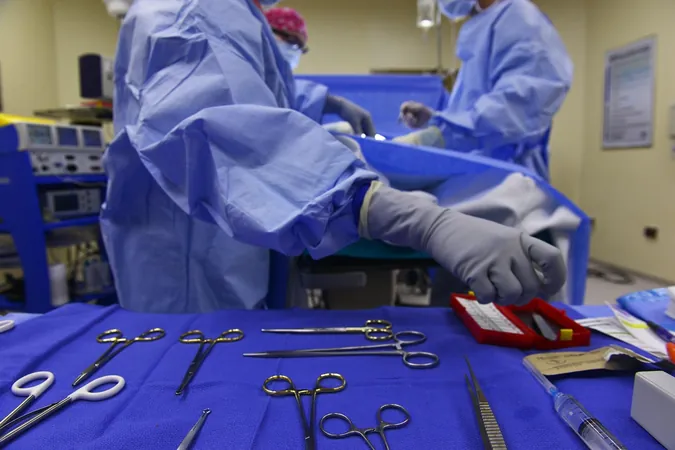
Unpacking the Mystery: Why Rural and Minoritized Groups Face Higher Amputation Rates
2025-07-09
Author: Yu
A Troubling Trend in Amputation Rates
Why are rural residents and racial minorities facing disproportionate rates of major leg amputations due to vascular disease? Groundbreaking research published in Epidemiology leverages the power of artificial intelligence (AI) to shed light on this alarming issue, revealing that implicit biases in clinical decision-making might significantly contribute to the problem.
Revealing Hidden Biases with AI
Paula Strassle, the study’s lead author and a professor at the University of Maryland, explains, "The AI model helped us identify underlying factors that explain these heightened amputation rates among specific demographic groups suffering from vascular disease." The research suggests that unconscious biases could be influencing medical decisions, leading some patients to receive amputations instead of viable limb-preserving alternatives.
A Growing Health Crisis
Around 12 million adults in the U.S. are affected by Peripheral Artery Disease (PAD), a chronic condition narrowing blood flow to the limbs and often resulting in debilitating pain and, in severe cases, limb loss. Approximately 10% of patients with PAD develop Chronic Limb-Threatening Ischemia (CLTI), necessitating either a surgery to restore blood flow or amputation.
The Disparities Unveiled
The study revealed that even after accounting for various medical factors, significant disparities remained among Black, Hispanic, and Native American patients in both rural and urban settings. Higher amputation rates persisted in these groups, underscoring a crucial gap in the quality of healthcare.
AI: A Tool for Justice in Healthcare
Using advanced AI algorithms, researchers analyzed data from hospitalizations between 2017 and 2019 across five states, including Florida and New York. This model evaluated over 70 different variables influencing amputation rates, including age, additional health issues, and even the geographical proximity to emergency care.
The Need for Comprehensive Guidelines
As vascular surgeon Katharine McGinigle noted, current medical guidelines fail to provide clear protocols for determining whether to amputate or pursue limb-saving surgeries in medically precarious cases. The complexity surrounding each patient’s condition necessitates better, evidence-based approaches.
Towards a More Equitable Future in Healthcare
Both Strassle and McGinigle hope that their findings will lead to comprehensive health policies that tackle implicit biases and discrepancies in care quality. The aim is to utilize AI tools, similar to those used in their study, to inform clinical decisions and ensure that treatment is tailored to each individual's unique needs.
Conclusion: A Call to Action
These revelations not only highlight the critical intersection of healthcare and social equity but also serve as a clarion call for medical professionals to confront and eliminate biases that could jeopardize lives. As we leverage technology to improve healthcare outcomes, the focus must remain on ensuring fair and equitable treatment for all.




 Brasil (PT)
Brasil (PT)
 Canada (EN)
Canada (EN)
 Chile (ES)
Chile (ES)
 Česko (CS)
Česko (CS)
 대한민국 (KO)
대한민국 (KO)
 España (ES)
España (ES)
 France (FR)
France (FR)
 Hong Kong (EN)
Hong Kong (EN)
 Italia (IT)
Italia (IT)
 日本 (JA)
日本 (JA)
 Magyarország (HU)
Magyarország (HU)
 Norge (NO)
Norge (NO)
 Polska (PL)
Polska (PL)
 Schweiz (DE)
Schweiz (DE)
 Singapore (EN)
Singapore (EN)
 Sverige (SV)
Sverige (SV)
 Suomi (FI)
Suomi (FI)
 Türkiye (TR)
Türkiye (TR)
 الإمارات العربية المتحدة (AR)
الإمارات العربية المتحدة (AR)